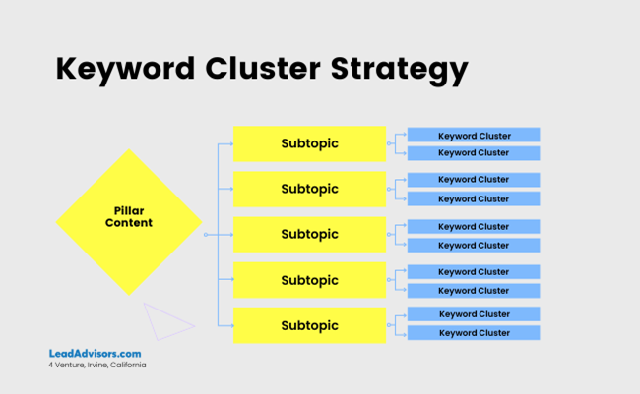Boost Business Growth with Effective Content Marketing and Lead Generation

Understanding the Connection Between Content, Leads, and Growth
Businesses in today’s digital landscape require new approaches to reaching customers and driving sales. While traditional advertising still has its place, many organizations are discovering content marketing and lead generation to be highly effective growth strategies.
Quality, informative content engages audiences and builds trust, leading to the capture of valuable leads that fuel business expansion. This article will explore how content marketing lead generation strategies work together to boost outcomes through targeted approaches that boost lead generation.
What is Content Marketing?
At its core, content marketing is the practice of creating content and sharing informative materials like blogs, videos, ebooks, infographics, and more to attract and retain audiences.
The goal is to create conversations with people through helpful resources rather than hard-selling products or services. Content takes various forms, with the common thread being adding value to customers instead of merely promoting.
Benefits of Content Marketing
Developing an active content strategy yields multiple benefits. Helpful guides and tutorials enhance a brand’s reputation as thoughtful and knowledgeable. They also engage potential customers by addressing their needs and challenges. They humanize a company by showing customers it understands their needs and challenges.
Steadily published content consistently drives traffic to websites as people search for solutions. Existing customers end up better served, leading to greater loyalty and advocacy over time.
Effective Lead Generation Strategies

While quality content serves to attract and inform target audiences, the subsequent goal is capturing valuable leads from these engaged prospects. Turning content consumers into qualified sales opportunities requires intentional strategies focused on nurturing contacts through their buying journey.
The following sections will explore tactics for generating high-quality leads through content creation, search engine optimization, social media engagement, and relationship-building communication programs.
Combined, these lead generation techniques help uncover and qualify potential customers revealed through educational content marketing efforts.
Creating Quality Content
The foundation of strong content marketing is, naturally, creating high-quality content. Pieces need to offer genuinely useful and well-researched information instead of coming across as thinly-veiled sales pitches. Topics must address real customer pains while reflecting a publisher’s areas of expertise. Engaging formats like visually striking guides keep audiences engaged versus dense walls of text.
Quality is further ensured by targeting specific buyer personas and composition styles. Headlines, subheads, and visual elements break up content for easier scanning. Internal links connect related topics under a cohesive framework. Tools like Grammarly and readability scores help refine writing. Overall, the focus remains on businesses' outward needs rather than inward wants.
Leveraging SEO for Lead Capture
Optimizing content for search surfaces in SERPs when people hunt for solutions. This is where SEO, or search engine optimization, plays a pivotal supporting role. Keywords researched through Google Keyword Planner or SEMrush aim content at relevant search behaviors.
Proper keyword implementation, metadata, linking, and technical SEO can help find content without being spammy. Social sharing and backlinks from authority sites further strengthen search visibility organically. Comments and citations showcase thought leadership to both search algorithms and potential leads, helping to generate leads effectively.
Enhancing Content with Social Media
While SEO attracts audiences through searches, social media channels engage them through communities. Facebook Groups, industry forums, and LinkedIn help start meaningful discussions. Repurposing content in social-first formats like infographics, images, and videos optimizes it for mobile and social reading habits.
Creative hashtags invite discovery beyond followers. Contests and quizzes offer low-pressure ways to capture contact info.
Tailoring messaging for each channel develops loyal brand advocates. Interacting with followers through comments maintains conversations started by quality content. The end goal? Generating genuine social proof and leads.
Combining Content Marketing and Lead Generation

Highly targeted content developed with strategic marketing expands a company’s sphere of influence. Savvy organizations close the loop by capitalizing on that influence through intentional lead nurturing. Syndicating lead generation content as part of a lead generation campaign pulls everything together.
Developing a Content Hub Strategy

Aggregating all forms of educational content, such as blog posts, community forums, and user-generated material, creates a centralized knowledge base destination, or “content hub.” Features of an effective content hub include:
a. Intuitive navigation between topics like articles, tools, and videos through category/tag filtering
b. Robust search functionality to surface relevant material
c. User profiles to build profile-based engagement
d. Forums, Q&A sections for peer-to-peer discussions
e. Content ratings, reviews, and social sharing buttons
f. Email capture form offering premium reports as an incentive
The goal is to provide an invaluable destination for buyers to progress on their journey through collaboration and additional.
Implementing an Account-Based Approach
Account-based marketing (ABM) customizes strategic campaigns to specific enterprise accounts based on intent data. Techniques include:
a. Partner with intent data providers to uncover accounts researching solutions
b. Enrich profiles with firmographics, tech evaluations, pain points
c. Syndicate educational content onto accounts’ websites with co-branded CTAs
d. Host webinars targeted specifically for those accounts
e. Nurture identified decision-makers within accounts separately
f. Measure account-specific engagement, conversion for optimization
ABM establishes credibility directly to target firms through contextualized education versus interruptive outreach, enhancing successful lead generation by aligning content with buyer needs. You May Also Like: How to Optimize Your Website for Local Lead Generation.
Planning Content Stages

Mapping content publishing to buyer stages provides consistency across the journey. For example:
a. Awareness: Articles solve common challenges, spotlight customer success stories
b. Consideration: Deep-dive case studies, product comparisons, ROI calculators
c. Evaluation: Third-party reports, client references, request-a-demo prompts
d. Decision: Testimonial videos, total cost of ownership tools, proposal requests
Stage-focused content introduces prospects to the brand, enlightens their options, and invites next steps like trials or advisory sessions. It effectively generates leads, facilitating a smooth progression towards becoming customers.
Creating an Integrated Plan
Integrating content and lead goals starts with defining them jointly within a unifying plan to create lead-generation content. This includes identifying target personas and their pain points. In lieu of sporadic, disconnected tactics, it also establishes KPIs and a content calendar. Outlining buyer journeys and touchpoints maps how content engages prospects through each stage.
Developing Detailed Persona Profiles

Creating detailed persona profiles of your target audience helps focus all marketing efforts, including content development and distribution strategies. Profiles outline key attributes like:
a. Demographics: Age, gender, location, job role, company size
b. Goals and challenges: Problems trying to solve, outcomes seeking to achieve
c. Buying triggers: Events prompting purchase considerations
d. Media consumption: Preferred channels for learning about products/services
e. Budget and timeline: Amount willing to spend, typical buying cycle length
Profiles provide a common language for all teams. They ensure clarity on who content and campaigns target while revealing deeper insights into motivations and educational needs across the buying journey.
Executing a Pillar Page Strategy
Establishing dedicated landing pages, or “pillar pages,” centered around high-intent, commercial topics is a powerful content distribution tactic. Examples could include pages like:
a. “How to Start an ECommerce Business”
b. “Content Marketing Strategy for Small Business”
c. “Digital Marketing Agencies Near Me”
These topic-focused pages appear in search results, aggregate all related content in one central hub, and provide more opportunities for backlinks. Regularly published updates keep pillar pages fresh and relevant in search rankings over time. Their secondary benefit is housing supplementary tools and assets to enrich the user experience, which ultimately generates leads.
Leveraging Brand Editorial Reviews

User-generated content from delighted customers builds social proof and enhances perceptions of authority. curating genuine editorial reviews on your website and within content establishes credibility through peer endorsements. Some tactics for utilizing editorial reviews include:
a. Invite past clients to share testimonials and star ratings on review pages publicly
b. Feature a selection of positive reviews throughout long-form blog posts and product pages
c. Syndicate reviews as social media images with user @mentions and quotations
d. Collect video reviews submitted to YouTube, Facebook and Instagram
e. Highlight top-rated reviews in email newsletters and advertisements
f. Request Google Business reviews from verified purchasers
Ensure reviews comply with FTC guidelines requiring transparency. With permission, weave excerpts featuring solutions into educational assets. Monitoring review sites also provide an opportunity to address any issues privately. Overall, editorial feedback authentically shows readers why others trust your brand.
Measuring What Matters
Key metrics provide robust insights into what resonates and what needs refining. Measuring the effectiveness of content marketing strategies is crucial, as analytics quantify how content and social efforts translate into qualified leads, demo requests, and pipelines.
Surveying leads about helpful resources and pain points addressed illuminates content strengths. A/B split testing different headlines, formats, and calls to action helps maximize strategies.
Regular reporting and adjusting keep optimization iterative based on performance. The goal is turning quality content into a steady stream of leads primed for sales follow-up that bolsters overall growth. By combining the magnetic power of insightful publications with an intentional generation process, content truly becomes a growth vehicle.
Lead With The Leading Team for Content Marketing
SEO and video optimizations surface these materials through search and social platforms while lead-capturing forms grant permission to nurture prospects further. Analyzing metrics justifies budgets and refines messaging according to what truly resonates. The ultimate goal is to transition engaged audiences into qualified sales opportunities.
If you seek to streamline your content creation, distribution, and lead generation processes, implementing effective content marketing strategies can supercharge your growth. Consulting with an agency like Lead Advisors provides the expertise needed to develop and execute comprehensive programs.
LeadAdvisors specializes in search engine optimization, content strategy, and multi-channel digital marketing. Their certified marketing strategists can perform an in-depth analysis of your brand’s current performance and recommend tailored solutions.
To learn how Lead Advisors can help maximize your business potential through people-first strategic initiatives, book a free consultation today. Their combined experience implementing programs for organizations of all sizes ensures your success.
Conclusion and Insights

Developing an active content marketing program anchored in valuable educational resources engages target audiences and cultivates trust. When paired with lead generation best practices, it allows capturing contacts qualified by demonstrated interest and problems already halfway solved. Together, these modern, digital-first techniques supercharge business expansion far beyond legacy promotional methods alone.
Every organization requires modern, data-driven growth strategies to succeed in today’s digital environment. This article outlined how content marketing and lead generation content provide a comprehensive solution when thoughtfully integrated into a unified program.
By developing detailed persona profiles, businesses better understand target audiences across their buying journeys. Creating high-quality content in multiple formats then guides prospects through each stage of consideration, evaluation, and decision-making. Placing educational content on pillar pages and accounts extends its reach.




